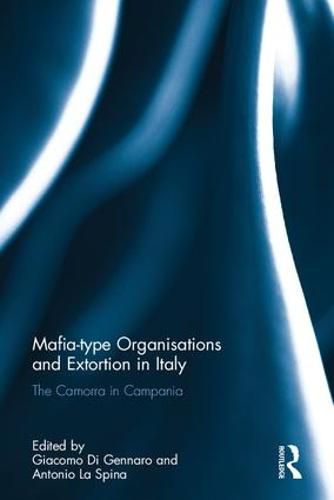Readings Newsletter
Become a Readings Member to make your shopping experience even easier.
Sign in or sign up for free!
You’re not far away from qualifying for FREE standard shipping within Australia
You’ve qualified for FREE standard shipping within Australia
The cart is loading…






Mafia-type organizations generate several distorting effects on the economy. In Italy their presence is endemic, and not only in Southern regions such as Sicily, Campania or Calabria. Such organizations endure the fierce and continuous pressure exerted by Italian anti-mafia policy, maybe the most articulate and effective such policy in the world. Nevertheless, they have survived by submerging, transforming, and relocating their operations.
The analysis of the different Mafias of today benefits from a huge amount of empirical data produced by investigators. This allows us to outline more reliable indexes of the penetration of Mafiosi in given territories, as well as to estimate the size of their activities in a transparent and empirically testable way. The contributions gathered in this book stem from the application of an innovative methodology originally introduced by the Fondazione Rocco Chinnici, and they enlarge our understanding of such a complex and dynamic phenomenon. After the presentation of the approach, the chapters are devoted to the Camorra’s present situation, to an estimate of the size of extortion, to a comparison between Cosa Nostra and Camorra, to the analysis of wiretapped conversations and, finally, to the delocalization of Mafias and the perspectives of a European anti-mafia policy. This book was originally published as a special issue of Global Crime.
$9.00 standard shipping within Australia
FREE standard shipping within Australia for orders over $100.00
Express & International shipping calculated at checkout
Stock availability can be subject to change without notice. We recommend calling the shop or contacting our online team to check availability of low stock items. Please see our Shopping Online page for more details.
Mafia-type organizations generate several distorting effects on the economy. In Italy their presence is endemic, and not only in Southern regions such as Sicily, Campania or Calabria. Such organizations endure the fierce and continuous pressure exerted by Italian anti-mafia policy, maybe the most articulate and effective such policy in the world. Nevertheless, they have survived by submerging, transforming, and relocating their operations.
The analysis of the different Mafias of today benefits from a huge amount of empirical data produced by investigators. This allows us to outline more reliable indexes of the penetration of Mafiosi in given territories, as well as to estimate the size of their activities in a transparent and empirically testable way. The contributions gathered in this book stem from the application of an innovative methodology originally introduced by the Fondazione Rocco Chinnici, and they enlarge our understanding of such a complex and dynamic phenomenon. After the presentation of the approach, the chapters are devoted to the Camorra’s present situation, to an estimate of the size of extortion, to a comparison between Cosa Nostra and Camorra, to the analysis of wiretapped conversations and, finally, to the delocalization of Mafias and the perspectives of a European anti-mafia policy. This book was originally published as a special issue of Global Crime.